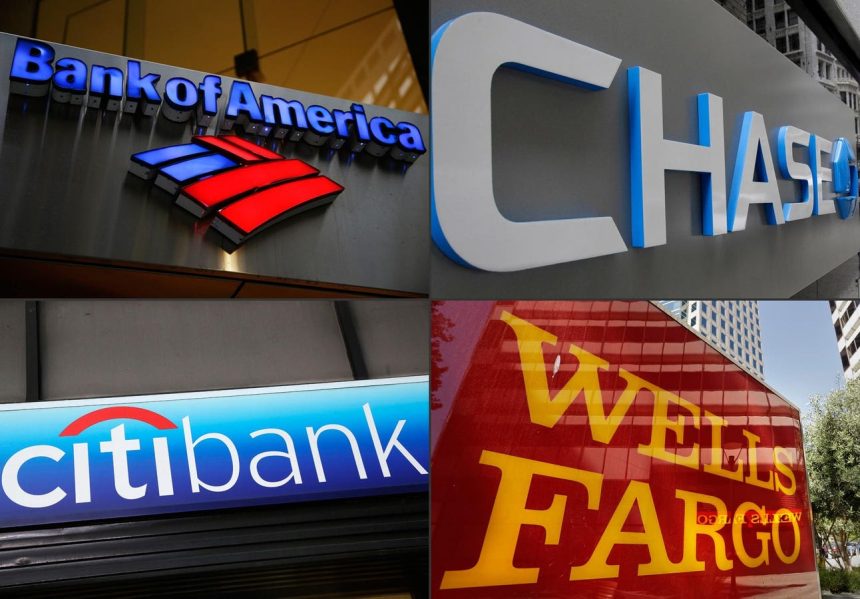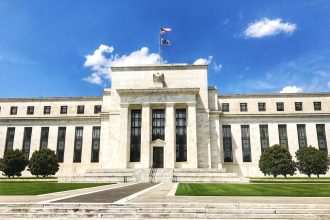In recent months bank lobbyists and bank executives from SIFMA President Kenneth E. Bentsen Jr. to JPMorgan Chase CEO Jamie Dimon have written op-eds and delivered congressional testimony criticizing important bank regulations called Basel III and now referred to as the “Basel III endgame.” These capital and liquidity rules are set up to do the opposite of what they claim. They make the banking system safer and avoid taxpayer bailouts.
The number of bank lobbyists is at its highest level since the financial crisis according to a Reuters analysis of Open Secrets data. They now have more resources to attack bank rules. However, despite daily assaults on Basel III rules by numerous bank lobbyists claiming Basel III will cause the demise of banking, Fitch Ratings, government, and bank regulator data do not support their claims.
Bank regulations certainly have not been detrimental to the U.S. economy. Since 2012 when bank regulations from both Basel III and Dodd-Frank started being phased in, U.S. GDP nonetheless has grown almost 69% to $27.3 trillion dollars.
Moreover, bank regulations have not slowed down U.S. banks’ dividend payouts, share buybacks, asset growth, earnings, their political contributions to legislators, or executive compensation. Unfortunately, bank regulations have also not slowed down banks’ repeated infractions and rules violations as demonstrated by the millions in fines they pay every year.
Dividend Payouts
An analysis of data compiled by Fitch Ratings this week shows that U.S. banks paid $85 billion in dividends to shareholders in 2023, a historic high. This dividend payout breaks the record dividend payout of $83 billion in 2022. JPMorgan, Wells Fargo
WFC
BAC
MS
TBBK
PNC
Despite three of the largest bank failures in U.S. history last spring, banks collectively did not feel nervous about paying such a level of dividends. Also last year, the Federal Reserve Bank, the Comptroller of the Currency, and the Federal Deposit Insurance Corporation released the updated Basel III rules (Basel III Endgame), which numerous bank executives and lobbyists have criticized as onerous. The possibility of higher capital requirements also did not deter shareholders from approving the dividend payouts. Deteriorating commercial real estate portfolios and rising defaults in corporate and auto loan portfolios also did not make executives and shareholders think twice about paying such a staggering level of dividends.
Dividends are high-quality capital, which can help banks sustain unexpected losses. The more that banks pay dividends, the harder it is for them to absorb unexpected losses. Both dividends and funds utilized for share buybacks could be used for banks capital or liquidity, increasing their safety and soundness. This would increase banks’ credit quality and lower their cost of borrowing, again helping them continue to lend to the real economy.
Bank Assets
At the beginning of 2012, U.S. banks had assets of $14.5 trillion. As of February 14, 2024, bank assets are now at $23.6 trillion, an increase of 62%. Bank regulations did not inhibit banks’ asset growth. Moreover, since 2012, banks have continued to add to their equities, below-investment-grade bonds, leveraged loans, securitizations, derivatives, and alternative asset portfolios. Obviously, regulation has not dampened their appetitive for risk.
Bank Earnings
Bank earnings have exploded since 2012. The year that Dodd-Frank and Basel III rules started being implemented, average earnings for each quarter were $33.4 billion. In the third quarter of 2023, the FDIC shows earnings at $71.8 billion, a 113% increase. These figures demonstrate how all the regulations in Europe, Asia, and the U.S. have not hurt U.S. banks’ earnings.
Bank Fines
Despite bank regulations, operational risk continues to be a significant source of risk for U.S, banks. They lose millions of dollars every year due to failing to identify, measure, control or monitor operational risk exposures. From 2000 through August 2023, the 20 largest bank operational risk fines internationally due to process weaknesses and violations totaled about $325 billion. Additionally, 67% of those fines, or $218 billion, were imposed on U.S. headquartered banks.
Executive Compensation
Executive compensation at banks rose 21% in 2021, even after Covid 19 challenges S&P Global Market Intelligence reported. It rose again in 2022 by 7%. The filings are not complete for 2023. Yet, early reports in a piece by American Banker show that Wells Fargo (+18.4%), Morgan Stanley (+17.5%), J.P. Morgan(+4.3%), and Capital One
COF
Banks’ and Lobbyists’ Contributions to Politicians
Data from Open Secrets shows that bank lobbyists’ and banks’ contributions to politicians have risen 54% since the financial crisis began in 2007. Even as banks were receiving bailouts, banks and lobbyists were contributing to politicians. Contributions to politicians rose 15% from 2007 to 2009.
Last year. the largest contributors by a wide margin were the American Bankers Association and the Independent Community Bankers of America; the two largest bank contributors were Citigroup
C
A Plea To Bank Regulators
Bank lobbyists’ complaints about proposed Basel III regulations overlook all kinds of risks tied to financial stability. Millions of Americans are hurt every time that a bank comes close to failing or fails. Do lobbyists ever recommend that banks pay employees more when they have to lay them off during bank chaos or crises? Do lobbyists contribute to state unemployment offices who have to pay benefits to unemployed bank lobbyists?
Bank regulators should not cave in to lobbyists. Their responsibility is the safety and soundness of the American banking system for the sake of ordinary citizens. Their job is not to be a friend to bankers or lobbyists. If they weaken bank regulations now, come this November, they may not get a chance to protect Americans again for a very long time.
Read the full article here
















